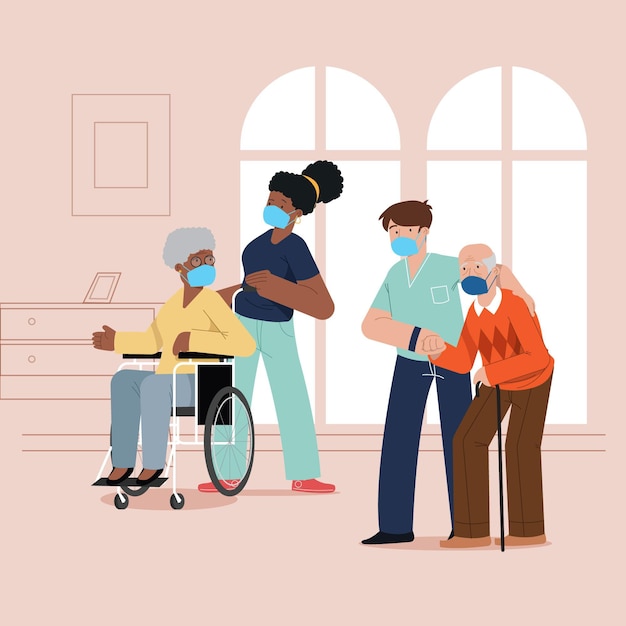Making the decision to transition to palliative care is often a challenging and emotionally charged process for individuals and their families. Palliative care homes, also known as hospice facilities, are specialised facilities designed to provide long-term care and support for individuals with terminal illnesses or those requiring intensive pain and symptom management. This transition is an important step, and it’s crucial to understand when it might be the right time. Here’s when to consider transitioning to a palliative care home as per healthcare experts and the benefits of doing so.
A Terminal Diagnosis
The primary indicator for considering a transition to a palliative care home is a terminal diagnosis. When a patient’s medical condition has reached a point where recovery is no longer possible, it may be time to seek specialised long-term care. Terminal illnesses can include advanced cancer, end-stage heart disease, late-stage dementia, or any condition where the prognosis is a matter of months rather than years. The focus at this stage shifts from curative treatment to improving the patient’s quality of life and managing symptoms.
Frequent Hospitalisations
If an individual with a terminal illness experiences frequent hospitalisations due to complications, pain management, or other medical issues, it may be a sign that transitioning to a palliative care home is appropriate. Palliative care homes are equipped to provide round-the-clock medical attention and comprehensive symptom management, reducing the need for recurrent hospital stays. This can lead to a more comfortable and stable environment for the patient.
Uncontrolled Symptoms
Some terminal illnesses can result in severe pain, breathlessness, nausea, or other distressing symptoms that become challenging to manage at home. When these symptoms become uncontrolled despite the best efforts of outpatient care, it’s a clear sign that the patient may benefit from specialised long-term care and expertise offered by a palliative care home. These facilities have a multidisciplinary team of professionals dedicated to alleviating symptoms and enhancing the patient’s comfort.
Caregiver Burnout
Family members often serve as primary carers for loved ones with terminal illnesses. However, the responsibilities of caregiving can be physically, emotionally, and mentally exhausting. If caregivers experience burnout, are unable to meet the patient’s increasing needs, or feel overwhelmed by caregiving responsibilities, it may be time to consider a palliative care home. This transition can provide respite for caregivers while ensuring that the patient receives the necessary care.
Decline in Functionality
As the terminal illness progresses, individuals may experience a significant decline in their physical or cognitive functionality. This decline can make it increasingly challenging for them to perform daily activities such as bathing, dressing, and eating. Palliative care homes have the resources and skilled staff to assist patients with these activities, ensuring their comfort and dignity in the final stages of their lives.
Deteriorating Mental Health
Terminal illnesses can take a toll on a patient’s mental health, leading to feelings of depression, anxiety, or existential distress. If a patient’s mental health deteriorates significantly, it may be beneficial to transition to a palliative care home, where they can receive psychological and emotional support from trained professionals. These facilities often offer counselling services, spiritual care, and emotional support to address the psychological aspects of end-of-life care.
Patient’s Wishes
The patient’s own preferences and wishes should play a central role in the decision to transition to a palliative care home. Many individuals facing a terminal diagnosis have specific desires regarding the type of care they want and where they want to receive it. Open and honest communication with the patient about their preferences is essential. It is also important to document their choices, whether they prefer to remain at home with hospice services or transition to a palliative care facility.
Benefits of Transitioning to a Palliative Care Home
Expert Symptom Management: Palliative care homes have specialised teams trained in managing symptoms such as pain, breathlessness, and nausea. They are equipped to provide round-the-clock care, ensuring that the patient’s comfort is a top priority.
Emotional and Psychological Support: Patients in palliative care homes have access to emotional and psychological support to address the mental and emotional challenges that can accompany a terminal diagnosis. This support can enhance their overall well-being and reduce distress.
Respite for Family Caregivers: Transitioning to a palliative care home can provide much-needed respite for family caregivers. It allows them to take a break, recharge, and continue to support their loved ones in a more sustainable way.
Dignified End-of-Life Care: Palliative care homes prioritise a patient’s comfort and dignity, ensuring that their end-of-life experience is as positive and respectful as possible. This can be particularly beneficial for individuals experiencing a significant decline in functionality.
Multidisciplinary Care: Palliative care homes offer a comprehensive approach to care, with a team of professionals, including doctors, nurses, social workers, counsellors, and spiritual care providers, working together to address all aspects of the patient’s well-being.
The decision to transition to a palliative care home is deeply personal and should be based on a combination of medical, emotional, and practical considerations. When a terminal diagnosis is made and symptoms are uncontrolled, the patient’s wishes, caregiver burnout, and the patient’s declining functionality and mental health are all factors to consider. Palliative care homes offer expert symptom management, emotional support, and a dignified end-of-life experience. Ultimately, the goal is to ensure that individuals with terminal illnesses receive the care they need to live their final months or weeks with comfort, dignity, and quality of life.










